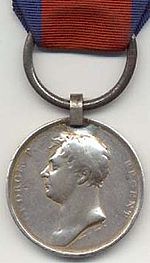
Bonfire night is upon us again and, despite the ongoing pandemic, dusk is ushered in by the sound of fireworks as it has been for the last few weeks.
This means that my social media feed is also full of people complaining about fireworks: children and young adults throwing them, pets being distressed by them, and our peace being shattered by them. But before we get carried away by thinking that this is in any way a modern problem, let me assure you that we’ve been complaining about fireworks for well over 150 years.
In 1846, for example, the London Daily News reported a case from the Edmonton Petty Sessions under the headline: ‘A caution to dealers in fireworks’.
Mary Emmune was summoned to court to explain why she had sold ‘a quantity of catherine wheels, squibs, etc.’ to a child. She faced a penalty of £5, which seems quite lenient but was the equivalent of around £300 today. Despite having a solicitor to represent her the bench still levied the full amount.
In doing this the chair (the magistrate in charge on the day) was probably mindful of his own experience of Guy Fawkes night that year. He told the dealer’s lawyer that his own horse had ‘nearly run away with him’ in fright at all the explosions around him, and that one of his friend’s animals had been ‘severely injured in consequence of fireworks’.
This is clear echo through time of the distress caused by loud bangs and flashes to our pets and work animals. In the past of course horses were ubiquitous in Victorian society. Pretty much everything we rely on motorised transport for (commuting, goods delivery, public transport) was provided by horse power in the 1800s.
So there was plenty of risk of animals being ‘spooked’ by fireworks (either those just ‘going off’ and those more mischievously thrown by youths. Youths were not allowed to be sold fireworks (which is why Mrs Emmune was prosecuted) and that is the case today. It is illegal to sell them to under 18s and it is against the law for anyone under 18 to be in possession of a firework in a public space.
In the following year there was tragedy in Exeter when an eighteen year-old apprentice was killed when two rockets exploded in his trouser pockets. The coroner’s jury returned a verdict of ‘accidental death’ with a strong recommendation ‘against the use of fireworks being permitted by the authorities’.
The same paper also reported that a curate and his assistant were prosecuted in Topsham, Devon, for ‘rolling lighted tea-barrels through the streets’, despite this practice having been banned by local magistrates. The Rev. Cooke was fined £2 plus expenses.
The same problems continue to blight Guy Fawkes today of course. Fatalities are rare but they do happen, but between 2000-2005 (the last year that statistics were taken) an average of 1,650 people a year were bring injured by fireworks.
Two more fatalities in 1851 were the result of illegal firework manufacture in the Clerkenwell, London. William Phillips and James Prickett (both in their late teens) died at St Bartholomew’s hospital in early November of wounds sustained when testing fireworks they were making. The other man involved was ‘dangerously ill’ and so evidence was scarce but it seems the trio were employed by a chemist named Thomas Herring in Aldersgate Street. Unbeknown to Herring the lads were making fireworks ‘solely for the amusement of themselves’.
‘They had made a lot of squibs’, the court was told, ‘but they would not go off properly’. As they tried again one ended up in the fire, popped out of the grate and set off others. There was an explosion which blew out the windows, and a fire engulfed the premises, leaving all three lads severely burned. The coroner concluded that the house might have exploded, taking down the nearby properties. He added that manufacturing fireworks was illegal, because it was deemed a ‘nuisance’ by law.
Your opinion on fireworks will probably be influenced by your age, where you live, and whether you have pets. I like displays but clearly that is problematic at the moment, especially as this year’s Bonfire Night marks the start of a new month long lockdown. In almost any other context they are nuisance at best. But, given that, as history tells us, this is an issue with deep roots, I doubt we are going to solve it until retailers are banned form selling fireworks completely (or choose to refrain from doing so independently).
So whatever you do do, do it safely and with regard for the people (and animals) you live close to.
[From Daily News, Friday 13 November 1846; Examiner, Saturday 27 November 1847; Morning Chronicle, Thursday 6 November 1851).










